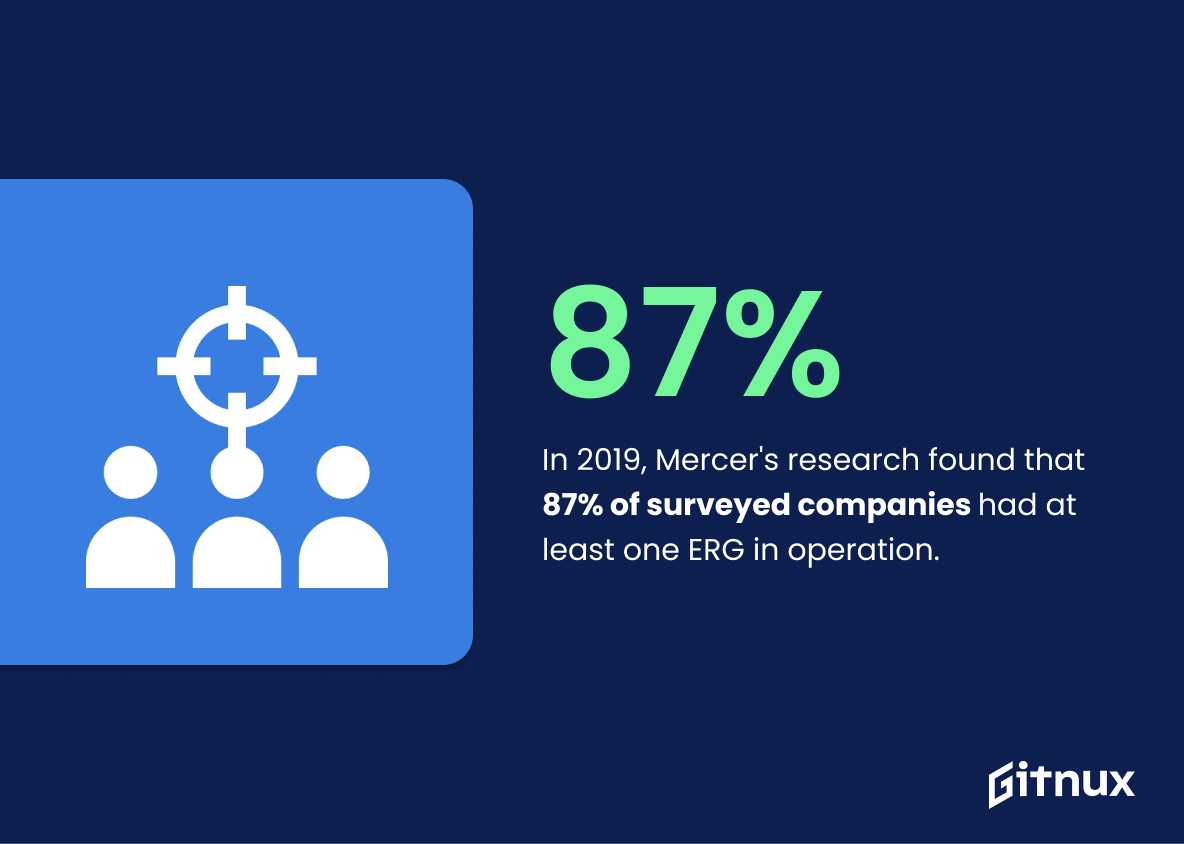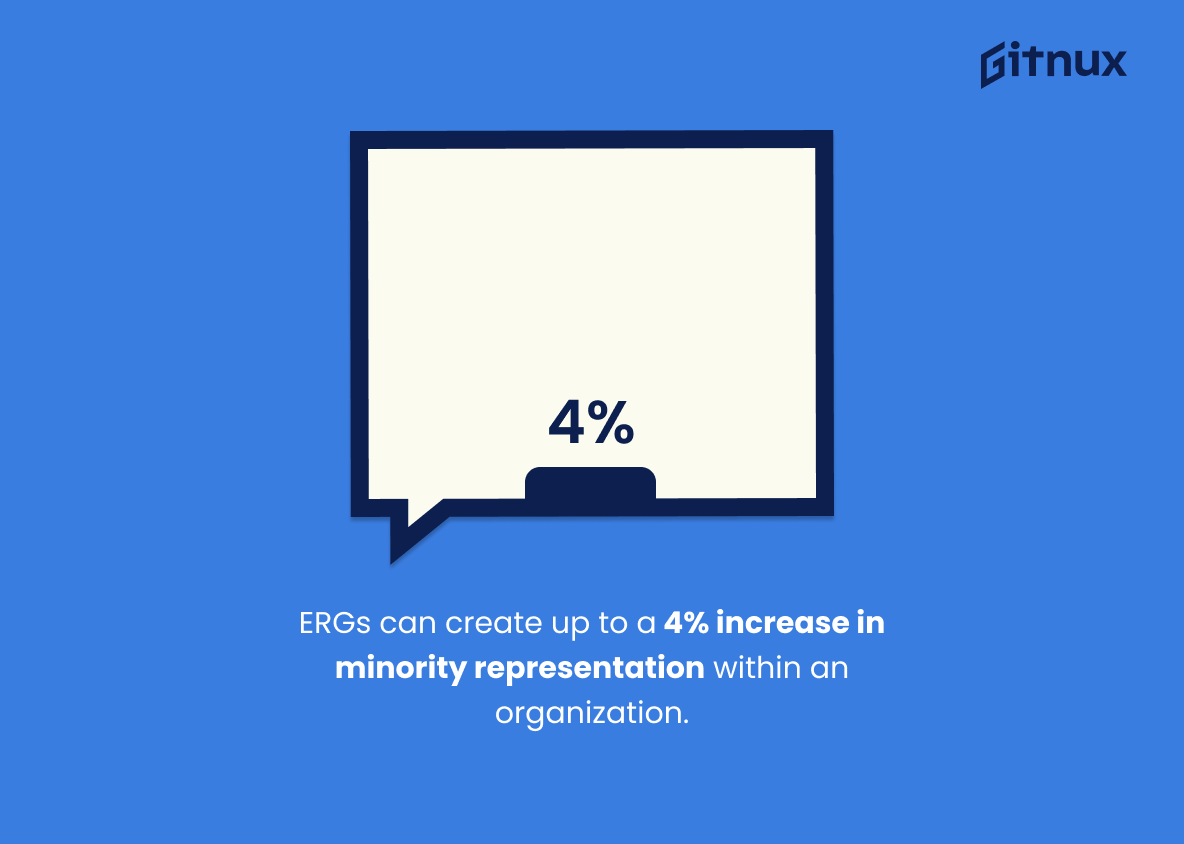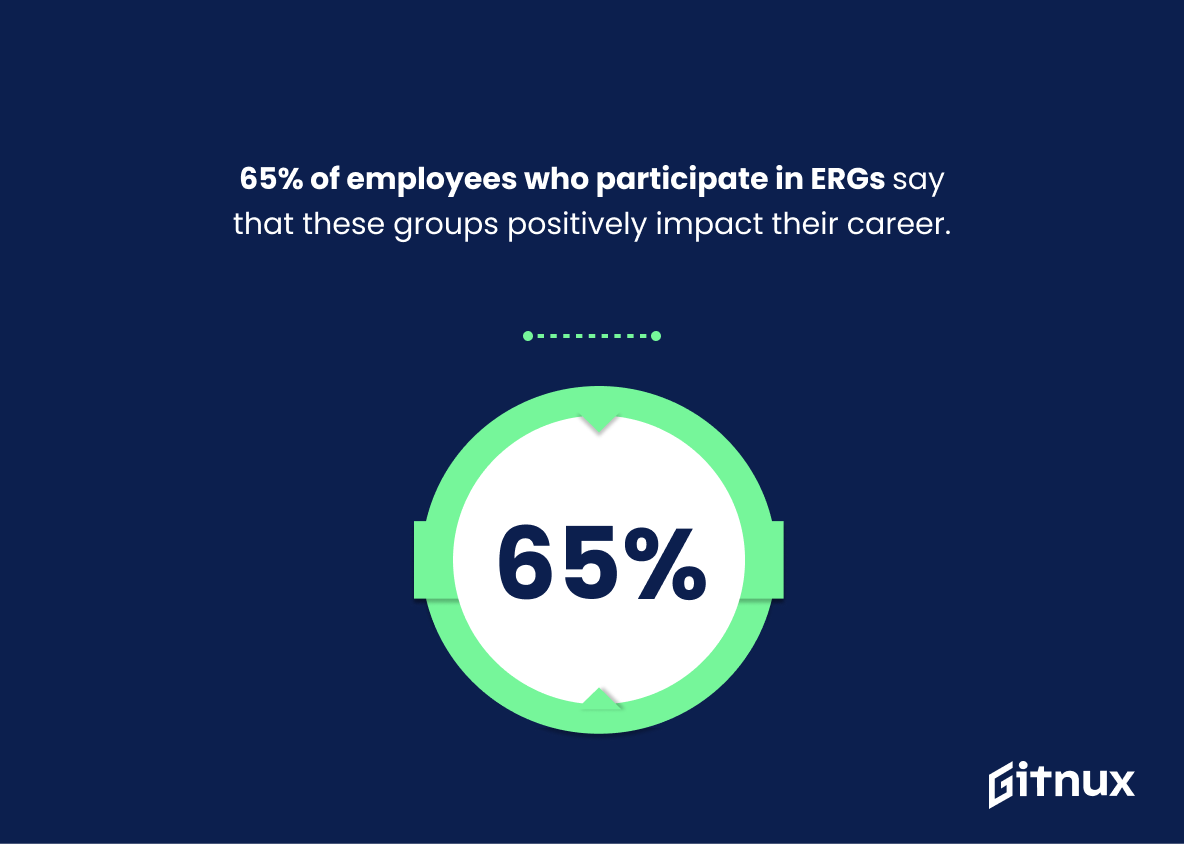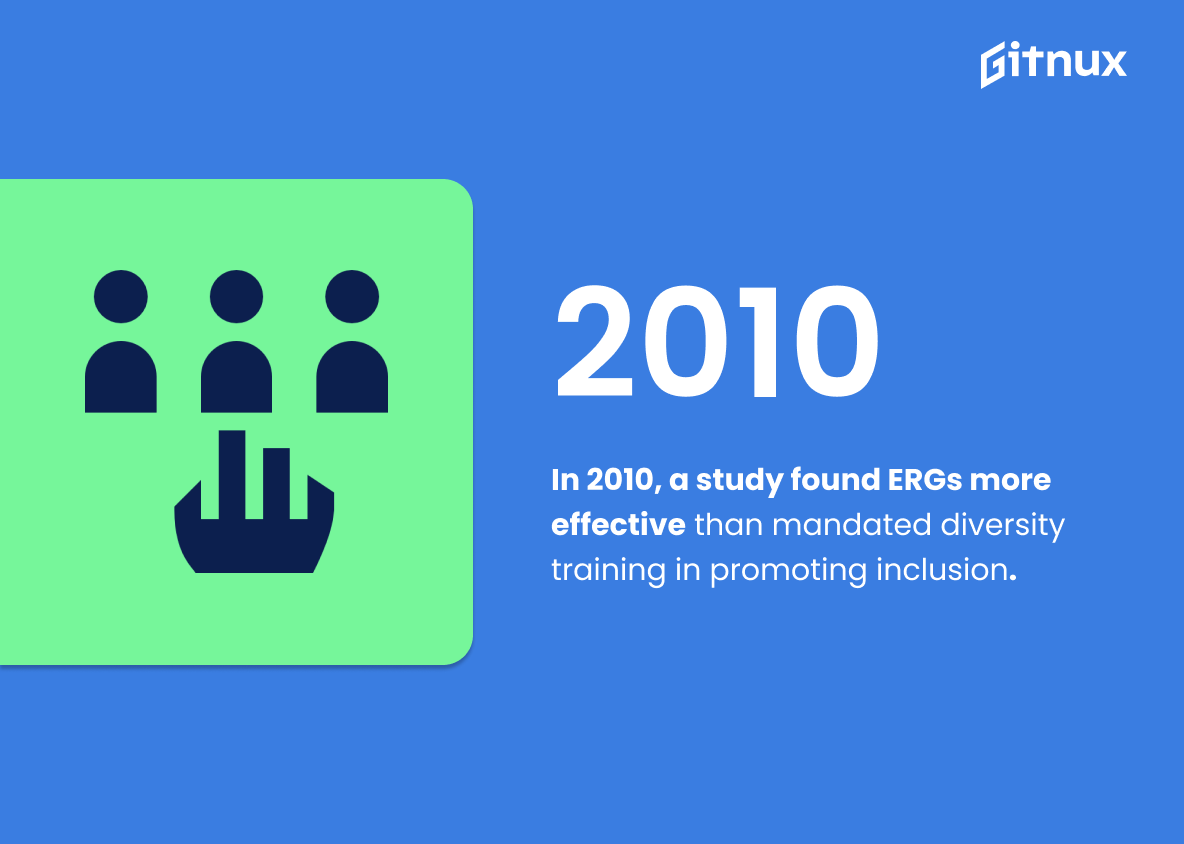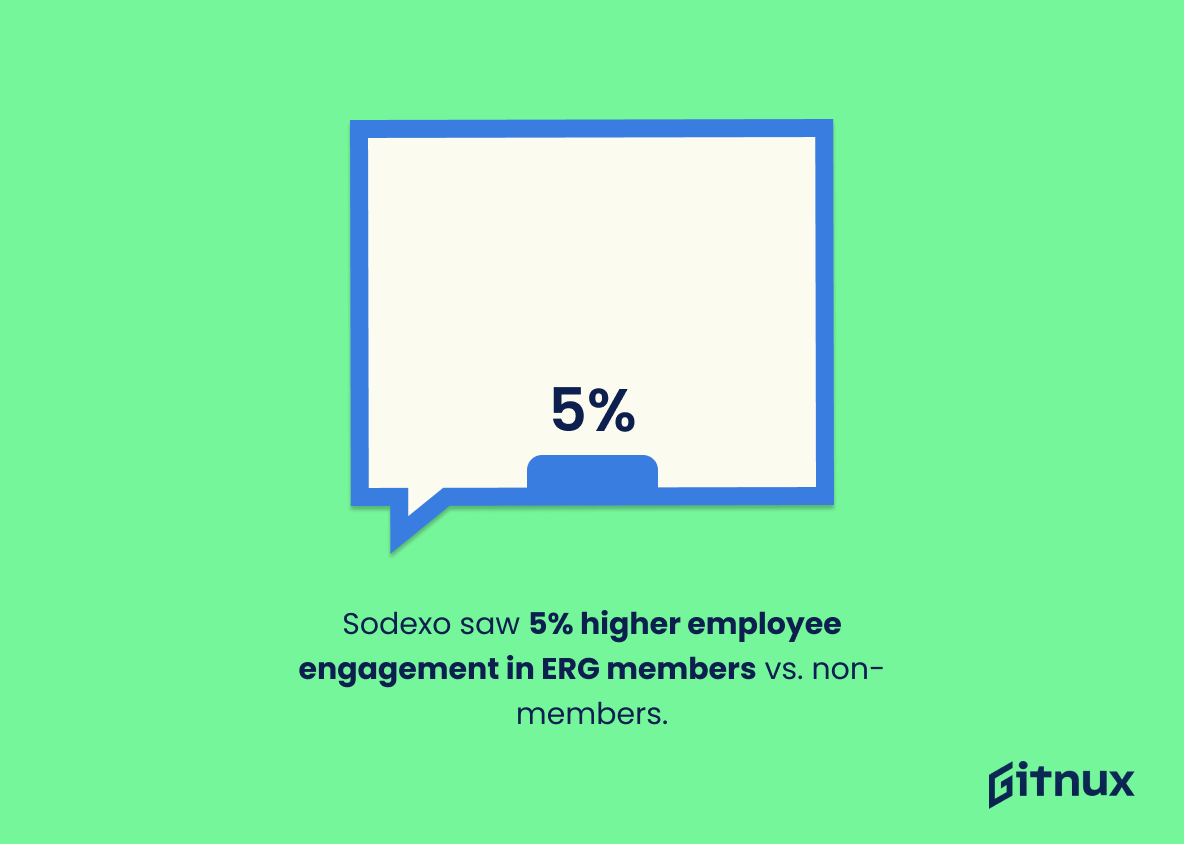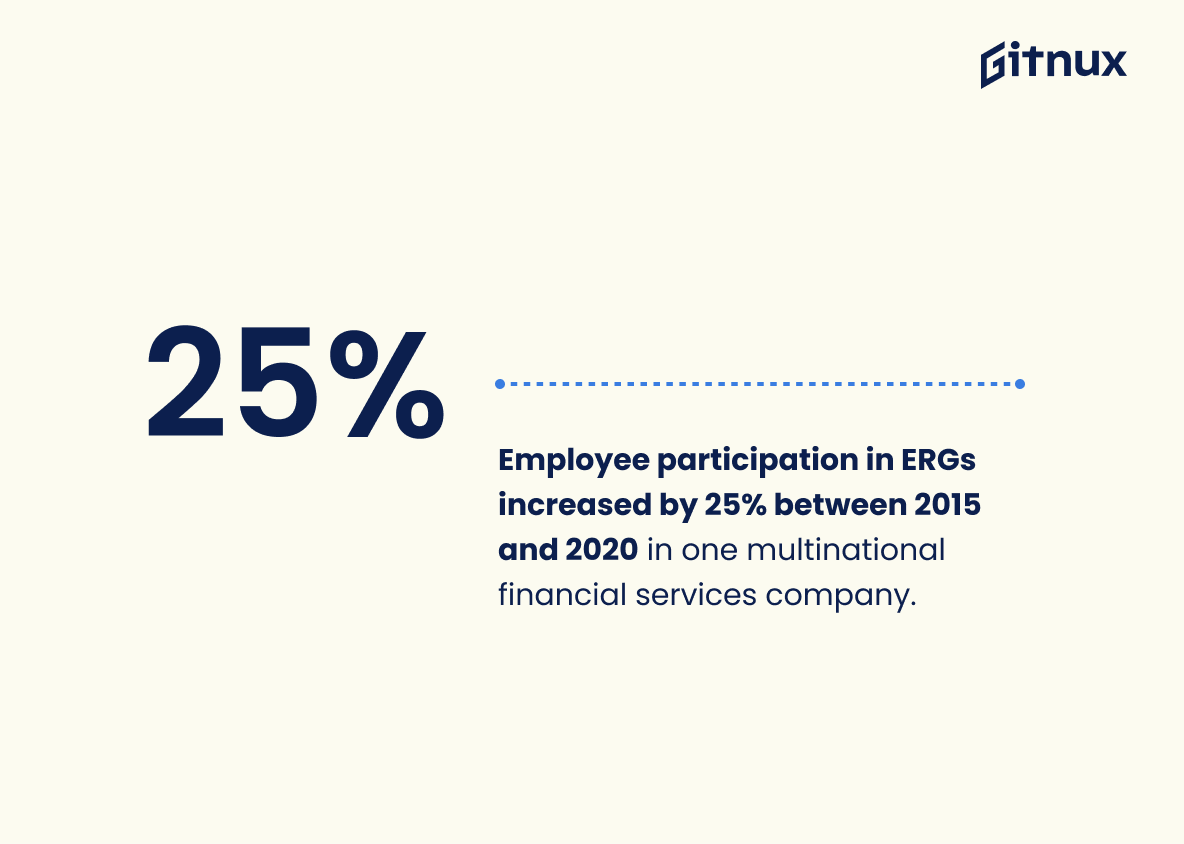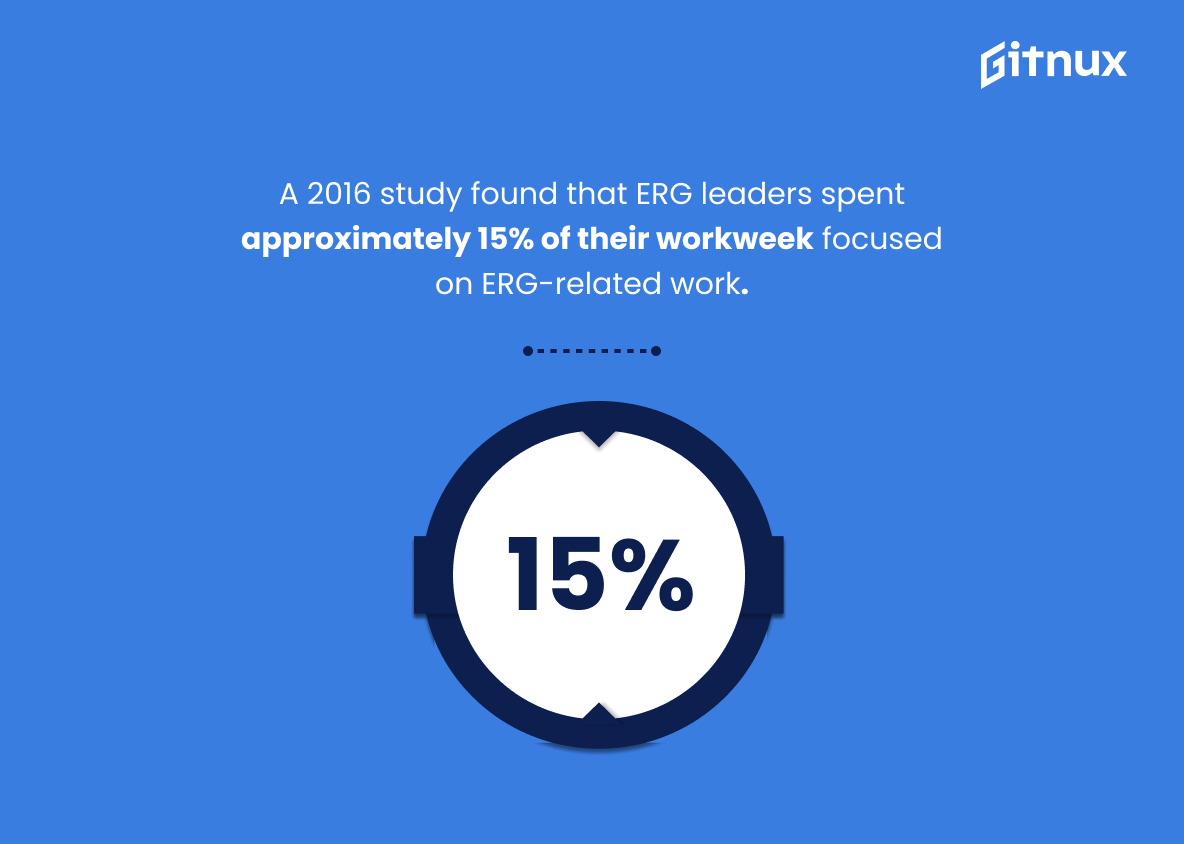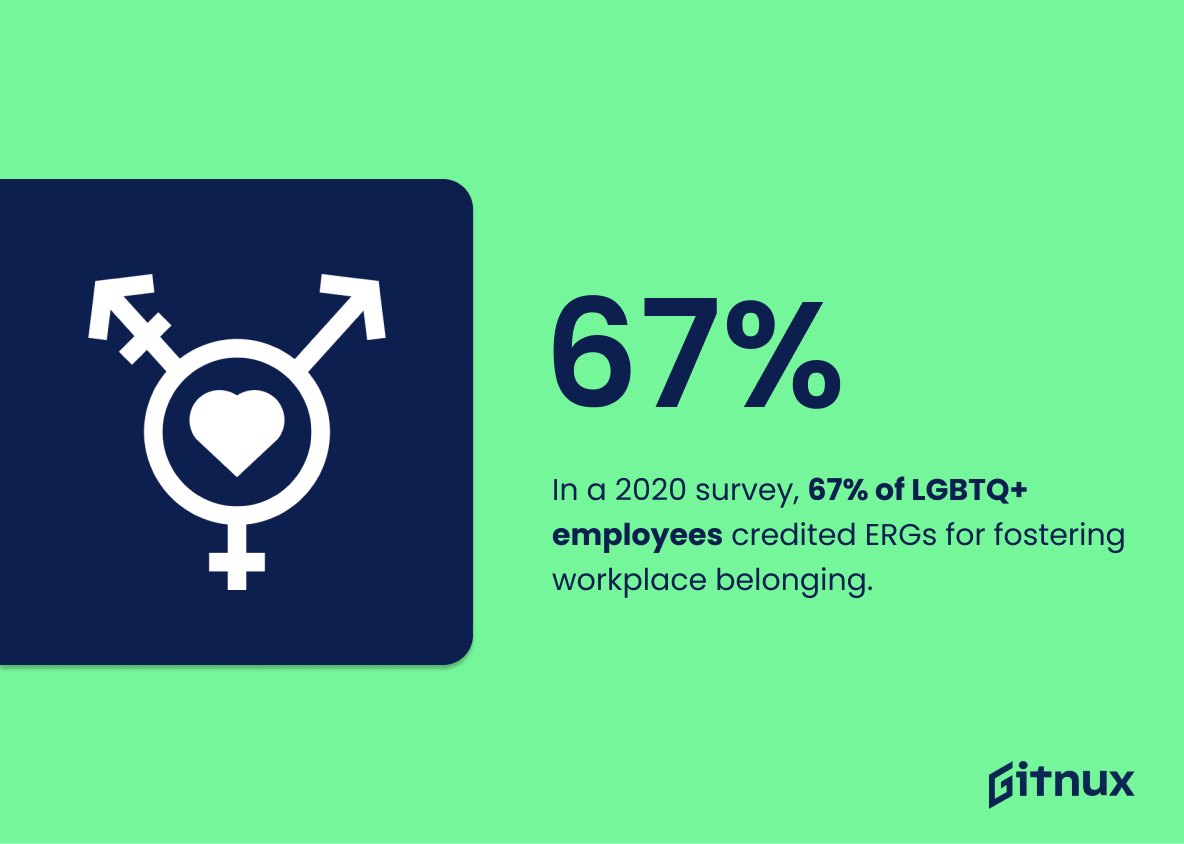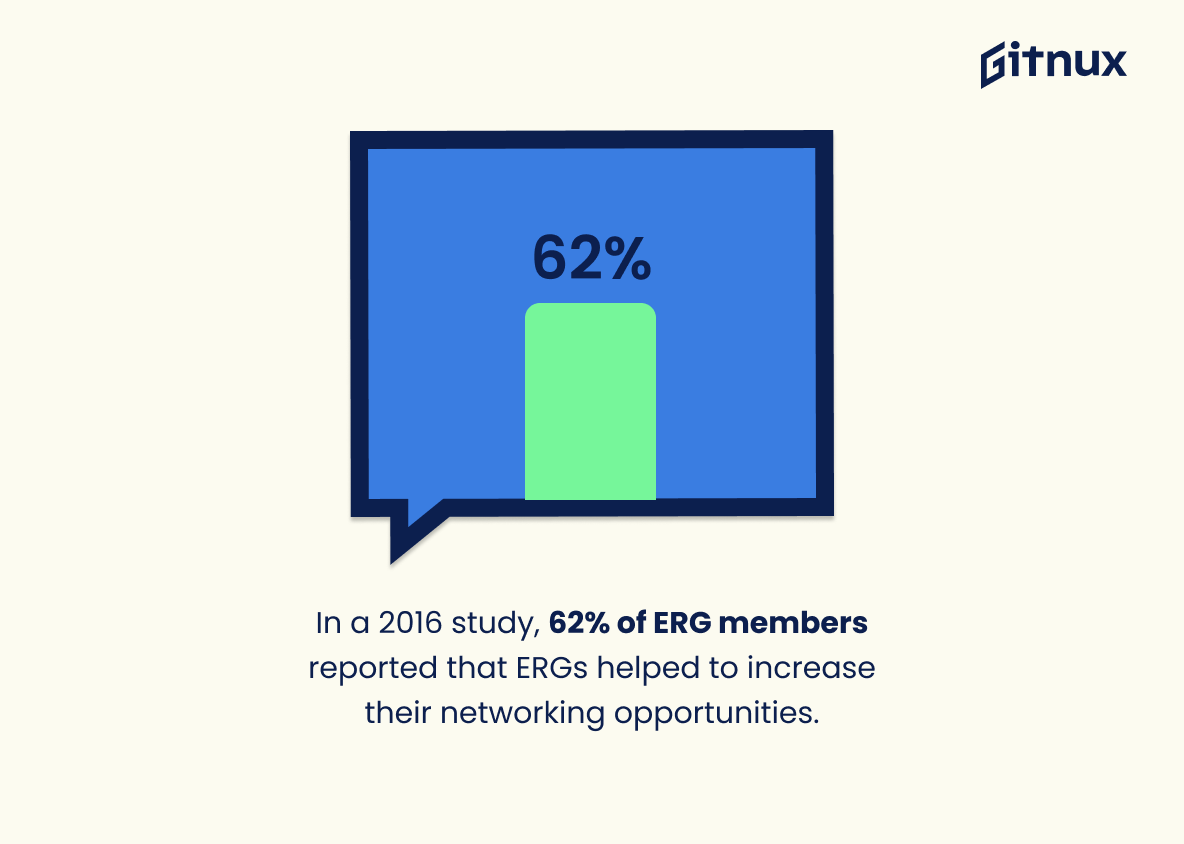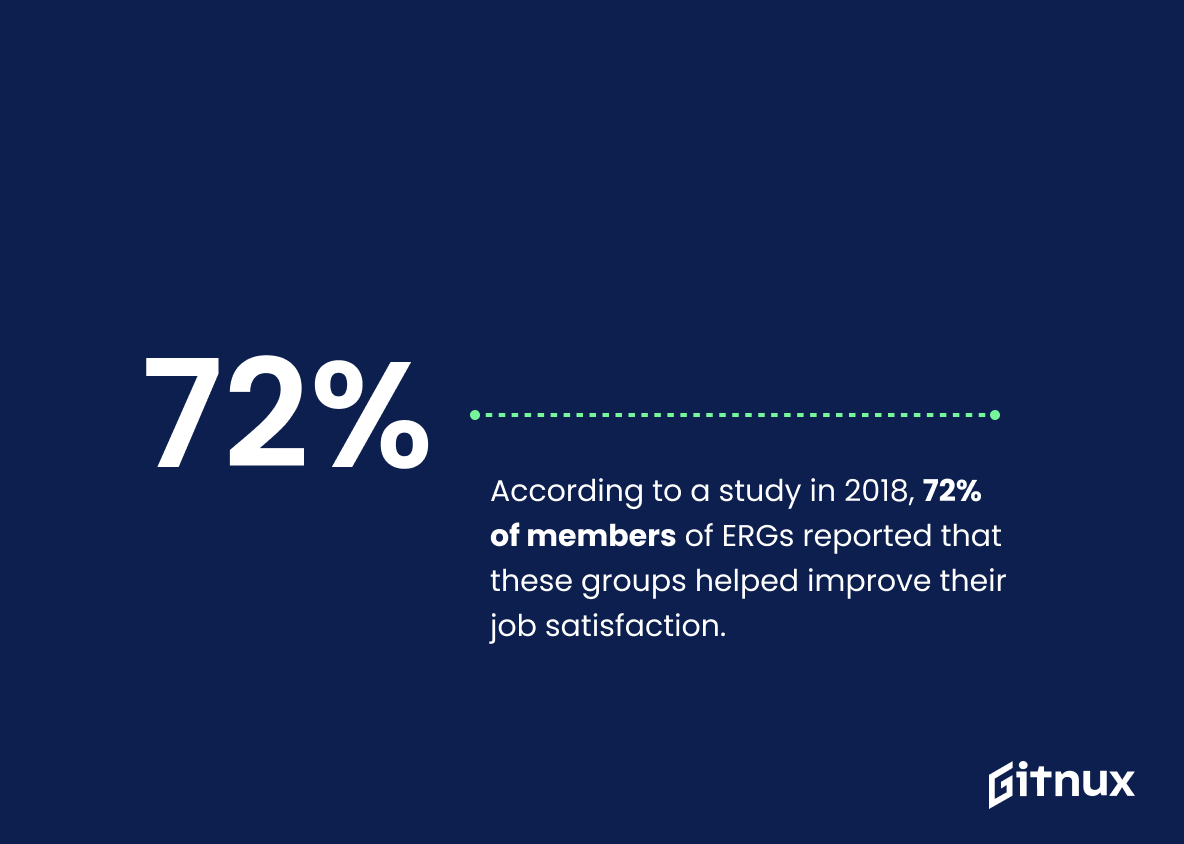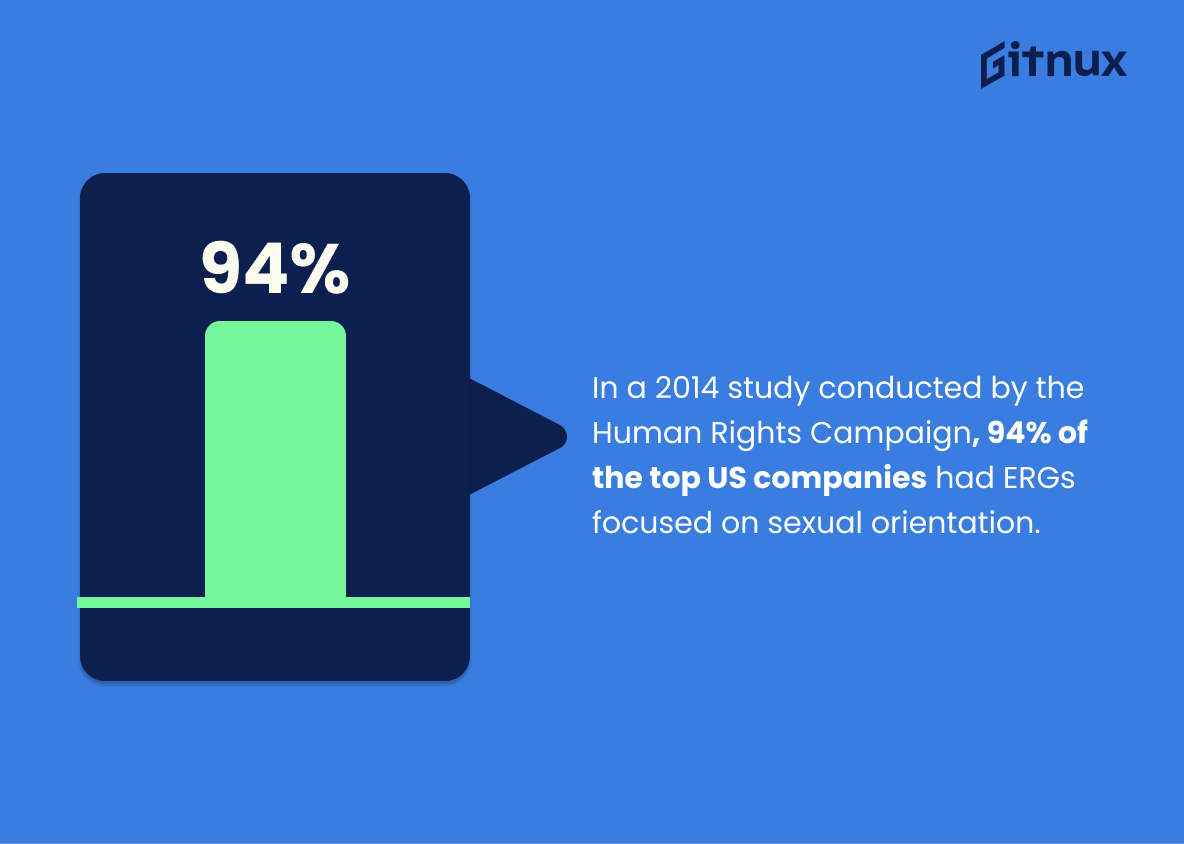Employee Resource Groups (ERGs) are an important part of any organization’s diversity and inclusion initiatives. They provide a platform for employees to come together, share experiences, and support each other in their professional development. ERG participation can have many positive impacts on employee engagement, job satisfaction, career advancement opportunities, recruitment efforts and more.
The statistics below demonstrate the impact that Employee Resource Groups can have within organizations:
1. Statistic: Employee Resource Groups (ERGs) can contribute to an increase in employee engagement by as much as 15%. URL: https://www.glassdoor.com/blog/guide/diversity-and-inclusion/.
2. Statistic: According to a November 2020 survey, 52% of employees expressed a desire for improved development and growth opportunities within their organization URL: https://www.cultureamp
Employee Resource Groups Statistics Overview
2019 research by Mercer showed that 87% of companies surveyed reported having at least one ERG in operation.
This statistic is a testament to the growing prevalence of Employee Resource Groups (ERGs) in the workplace. It shows that the majority of companies surveyed have implemented ERGs, indicating that they are becoming an increasingly popular way for employers to foster a sense of community and inclusion among their employees. This is an important development for companies looking to create a more diverse and inclusive workplace.
ERGs can create up to a 4% increase in minority representation within an organization.
This statistic is a testament to the power of Employee Resource Groups (ERGs) in promoting diversity and inclusion within an organization. It highlights the potential for ERGs to make a tangible difference in the representation of minority groups in the workplace. This is an important statistic to consider when discussing the effectiveness of ERGs in creating a more equitable and inclusive workplace.
57% of US employees reported benefits from participating in ERGs, such as professional development and career advancement.
This statistic is a testament to the power of Employee Resource Groups (ERGs) in the workplace. It shows that a majority of US employees have experienced tangible benefits from participating in ERGs, such as professional development and career advancement. This is an important statistic to consider when discussing the value of ERGs, as it demonstrates the positive impact they can have on employees.
In 2018, 56% of employees at a flexible workspace provider joined at least one ERG.
This statistic is a testament to the power of Employee Resource Groups (ERGs). It shows that a majority of employees at a flexible workspace provider have chosen to join an ERG, indicating that ERGs are an important part of the workplace culture and are valued by employees. This statistic is a strong indicator that ERGs are an effective way to foster a sense of belonging and inclusion in the workplace.
65% of employees who participate in ERGs say that these groups positively impact their career.
This statistic is a powerful indicator of the value that Employee Resource Groups (ERGs) bring to the workplace. It shows that the majority of employees who participate in ERGs feel that their involvement has had a positive impact on their career. This is an important statistic to consider when discussing the effectiveness of ERGs, as it demonstrates that they are a beneficial resource for employees.
In a 2010 study, researchers found that voluntary diversity networks, such as ERGs, were more effective in promoting inclusion than mandated diversity training.
This statistic is a powerful reminder of the importance of Employee Resource Groups (ERGs) in promoting inclusion. It highlights the fact that ERGs are more effective than mandated diversity training in creating an inclusive workplace, and thus should be given priority when it comes to workplace diversity initiatives. This is especially pertinent in the context of a blog post about ERGs, as it serves to emphasize the value of these groups in fostering a diverse and inclusive workplace.
Sodexo reported a 5% increase in employee engagement for members who belonged to one or more ERGs, compared to non-members.
This statistic is a testament to the power of Employee Resource Groups (ERGs) in fostering a sense of belonging and engagement among employees. It shows that ERGs can be an effective tool for creating a more connected and engaged workforce. This is an important statistic to consider when discussing the value of ERGs and their impact on employee engagement.
Employee participation in ERGs increased by 25% between 2015 and 2020 in one multinational financial services company.
This statistic is a testament to the success of Employee Resource Groups in one multinational financial services company. It shows that the company has been able to foster an environment of inclusion and support for its employees, which has resulted in a 25% increase in participation in ERGs over the past five years. This is an impressive achievement and serves as an example of how ERGs can be used to create a more diverse and inclusive workplace.
In 2016, the National Organization on Disability (NOD) surveyed 59 Fortune 1000 company representatives and found that 78% of these companies had at least one disability-focused ERG.
This statistic is a testament to the progress that has been made in the area of Employee Resource Groups (ERGs). It shows that a majority of Fortune 1000 companies have taken the initiative to create ERGs that focus on disability, demonstrating their commitment to creating an inclusive workplace. This is an encouraging sign for those who are looking to create a more diverse and equitable workplace.
A 2016 study found that ERG leaders spent approximately 15% of their workweek focused on ERG-related work.
This statistic is significant in the context of Employee Resource Groups Statistics because it provides insight into the amount of time and effort that ERG leaders are dedicating to their groups. It demonstrates the commitment of ERG leaders to their groups and the importance they place on their work. This statistic is also important because it can be used to measure the effectiveness of ERG initiatives and to identify areas for improvement.
In a 2020 survey, 67% of employees who identified as LGBTQ+ said that ERGs played a significant role in helping them feel a sense of belonging at their workplace.
This statistic is a powerful testament to the impact Employee Resource Groups (ERGs) can have on creating a sense of belonging for LGBTQ+ employees in the workplace. It highlights the importance of ERGs in providing a safe and supportive environment for LGBTQ+ employees, and demonstrates the positive effect that ERGs can have on workplace culture.
In a 2016 study, 62% of ERG members reported that ERGs helped to increase their networking opportunities.
This statistic is a testament to the power of Employee Resource Groups (ERGs) in providing networking opportunities for their members. It shows that ERGs are an effective way for members to expand their professional connections and build relationships with like-minded individuals. This is an important factor to consider when discussing the value of ERGs, as networking is a key component of career growth and development.
According to a study in 2018, 72% of members of ERGs reported that these groups helped improve their job satisfaction.
This statistic is a powerful testament to the positive impact Employee Resource Groups can have on job satisfaction. It shows that ERGs are an effective tool for creating a more fulfilling work environment, and can be a valuable asset for any organization.
In a 2014 study conducted by the Human Rights Campaign, 94% of the top US companies had ERGs focused on sexual orientation.
This statistic is a testament to the progress that has been made in the workplace when it comes to creating a safe and inclusive environment for LGBTQ+ employees. It shows that the majority of the top US companies are taking steps to ensure that their employees feel comfortable and accepted in the workplace, regardless of their sexual orientation. This is an important step in creating a more equitable and diverse workplace, and it is encouraging to see that so many companies are taking this issue seriously.
Conclusion
Employee Resource Groups (ERGs) have become increasingly popular in the workplace, and for good reason. Studies show that ERGs can contribute to an increase in employee engagement by as much as 15%, create up to a 4% increase in minority representation within an organization, and help employees feel more included at their workplaces. Additionally, they are linked to reduced employee turnover rates and improved job satisfaction among members. Companies of all sizes should consider implementing ERGs if they want to foster diversity and inclusion initiatives while also providing professional development opportunities for their employees.
References
0. – https://www.shrm.org
1. – https://www.medium.com
2. – https://www.ey.com
3. – https://www.boozallen.com
4. – https://www.hbr.org
5. – https://www.rallyware.com
6. – https://www.nod.org
7. – https://www.hrc.org
8. – https://www.linkedin.com
9. – https://www.blog.dropbox.com
10. – https://www.businessinsider.com
11. – https://www.mercer.us
12. – https://www.overturepromotions.com
13. – https://www.cultureamp.com
14. – https://www.forbes.com
ZipDo, cited June 2023: Employee Resource Groups Statistics
